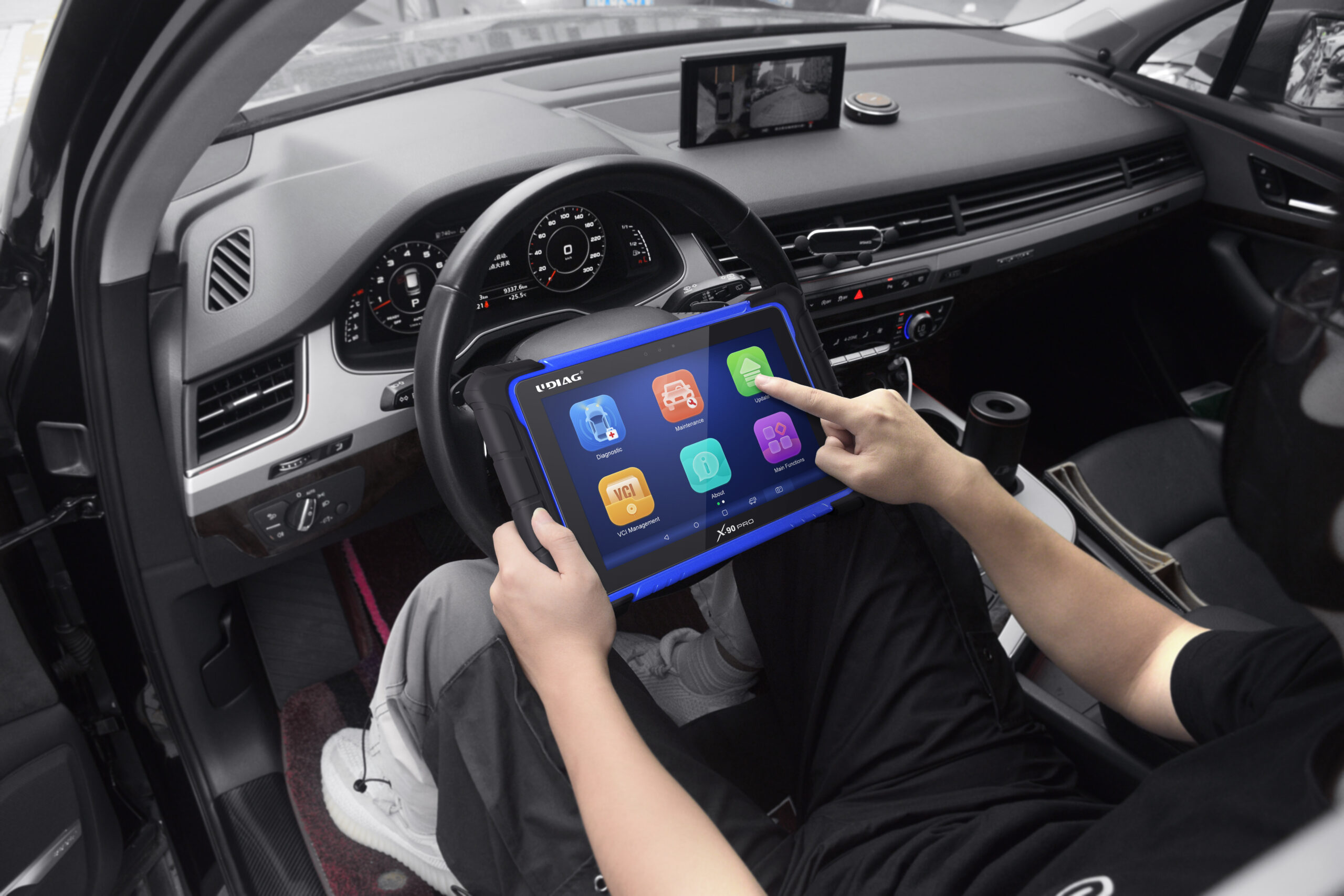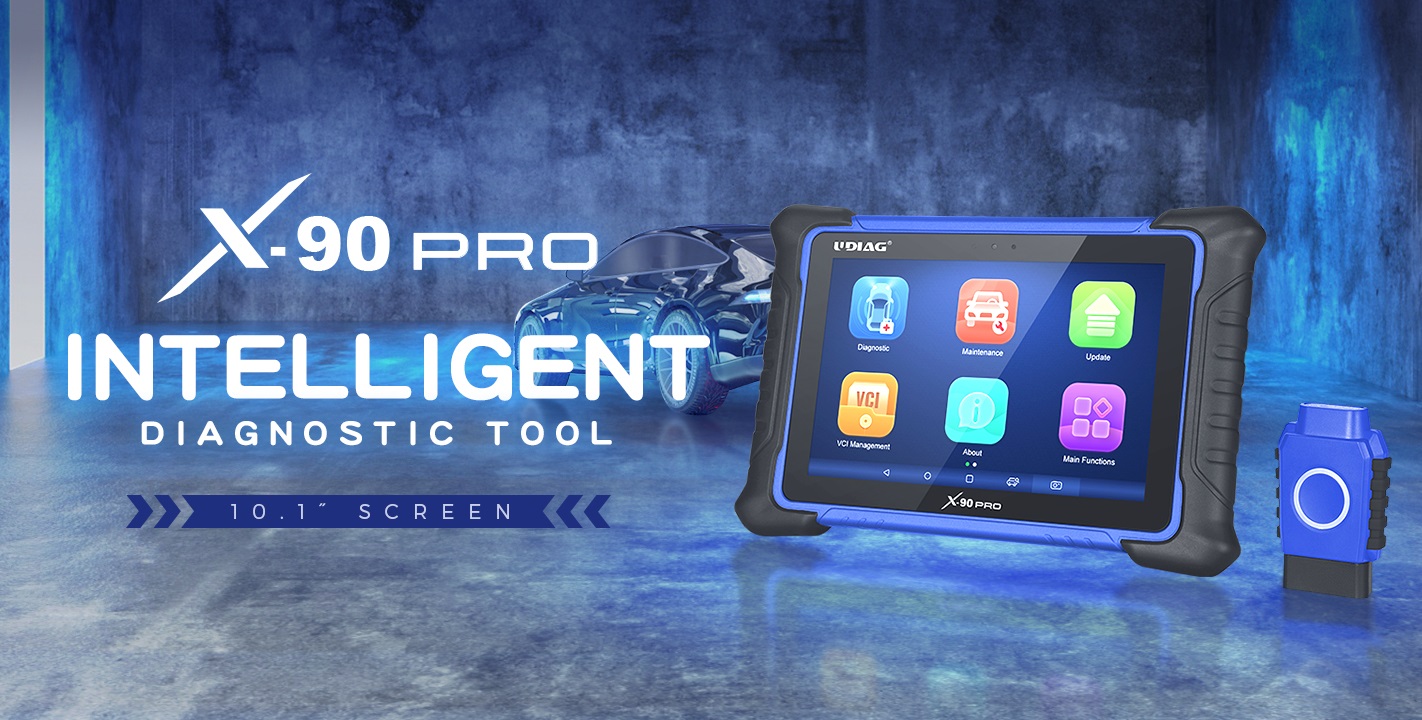Electronic Throttle Control: All you need to know
2023-04-12 by UDIAG
In this age of technology, it is essential to understand the working principles of modern automotive systems like the ETC system, its benefits, and potential issues. This knowledge helps vehicle owners make informed decisions about maintenance and repair and ensures safe and efficient operation of their vehicles. In this regard, this topic is a must-know for anyone who owns or drives a modern vehicle, and this guide will provide valuable insights into Electronic Throttle Control system operation, failure causes, and troubleshooting tips to ensure a safe and enjoyable driving experience.
What is Electronic Throttle Control
Electronic Throttle Control (ETC), also known as drive-by-wire or throttle-by-wire, is a technology used in modern vehicles to control the engine’s throttle electronically. In traditional cars, the throttle is controlled by a cable that runs from the gas pedal to the engine’s throttle body. However, in ETC systems, the gas pedal is connected to a sensor that sends an electronic signal to the car’s computer, which then adjusts the engine’s throttle accordingly.
In case of a failure of the ETC system, most modern cars have a failsafe mode that allows the car to be driven at a reduced speed to a mechanic for repair.

Why do we have the Electronic Throttle Control system
The Electronic Throttle Control (ETC) system was introduced in modern vehicles to replace the traditional mechanical linkage between the gas pedal and the engine throttle. ETC provides many benefits such as:
- Improved fuel efficiency: The ETC system allows the car’s computer to control the engine’s throttle opening and reduce unnecessary fuel consumption, resulting in better fuel efficiency.
- Better drivability: ETC ensures a smooth and precise response to driver inputs, providing better drivability and enhancing the overall driving experience.
- Reduced emissions: The ETC system enables more precise control of the air-fuel mixture and reduces emissions by ensuring that the engine runs at its optimum efficiency.
- Improved safety: ETC allows for the integration of advanced safety features like traction control and stability control, which improve the car’s handling and reduce the risk of accidents.
- Cost-effectiveness: ETC eliminates the need for mechanical linkages, reducing the cost of manufacturing and maintenance of the vehicle.
Overall, the Electronic Throttle Control system provides many benefits, including improved fuel efficiency, better drivability, reduced emissions, improved safety, and cost-effectiveness.
How does Electronic Throttle Control work
Electronic Throttle Control (ETC) works by replacing the traditional mechanical linkage between the gas pedal and the engine’s throttle with an electronic signal sent by a sensor on the gas pedal to the car’s computer. Here are the basic steps involved in the ETC system’s operation:
When the driver presses on the gas pedal, a sensor on the pedal sends an electronic signal to the car’s computer. The computer analyzes the signal and determines how much to open the engine’s throttle valve. The computer then sends an electronic signal to the throttle actuator, which controls the throttle valve’s position, adjusting the airflow to the engine. The engine control module (ECM) monitors the engine’s sensors to ensure that the engine is running smoothly and efficiently, making any necessary adjustments to the throttle opening to maintain optimal performance. If there is any fault in the system, the ECM activates a failsafe mode, which typically limits the engine’s power and reduces speed, allowing the driver to safely drive the vehicle to a repair shop.
The ETC system relies on sensors, computer processing, and electronic signals to control the engine’s throttle, providing a smoother, more efficient, and safer driving experience.
What causes the Electronic Throttle Control system to fail
The Electronic Throttle Control (ETC) system is a complex system, and various factors can cause it to fail. Here are some of the most common causes of ETC system failure:
- Electrical Issues
Any problem with the wiring, connectors, or fuses that supply power or control the ETC system can cause it to fail. Loose connections or damaged wires can cause the ETC system to malfunction, leading to issues like throttle hesitation or sudden loss of power.
- Throttle Body Issues
The throttle body is an essential component of the ETC system. Any damage or wear and tear on the throttle body can cause the ETC system to fail. Common problems include throttle body sensor failure, dirt buildup on the throttle plate, and mechanical failure of the throttle actuator motor.
- Faulty Sensors
The ETC system relies on various sensors to operate, including the throttle position sensor, accelerator pedal position sensor, and engine speed sensor. Any malfunction or failure of these sensors can cause the ETC system to fail, leading to issues like rough idle, stalling, or acceleration problems.
- Malfunctioning Computer
The car’s computer controls the ETC system, and any malfunction in the computer’s circuitry or software can cause the ETC system to fail.
- Environmental Factors
Extreme temperatures, high humidity, or exposure to water can damage the ETC system’s components and cause them to fail.
Regular maintenance and inspection of the ETC system can help identify and prevent many of these issues, ensuring the system’s smooth operation and avoiding potential safety hazards.
What should you do if the Electronic Throttle Control light turns on
If the Electronic Throttle Control (ETC) light turns on, it indicates that there is a problem with the ETC system, and you should take immediate action to address the issue. Here are some steps you can take:
- Check the Owner’s Manual
The first thing you should do is check the owner’s manual to understand what the ETC light means and what actions you should take.
- Pull Over Safely
If the light turns on while driving, pull over safely and turn off the engine. Do not continue driving the vehicle as the ETC system’s failure can cause sudden loss of power or other driving hazards.
- Check for Fault Codes
Use a diagnostic tool from UDIAG to read any fault codes stored in the car’s computer. The codes will help identify the specific issue with the ETC system and guide you on the next steps.

- Check for Loose Connections
Check for any loose or disconnected wiring or connections in the ETC system. Secure any loose connections, and if the problem persists, seek professional help.
- Seek Professional Help
If you are unable to identify and resolve the issue, seek the assistance of a certified mechanic from UDIAG to diagnose and repair the ETC system. Please click the WhatsApp button to contact us at any time.
Ignoring the ETC light can lead to further damage to the ETC system, reduce fuel efficiency, or pose a safety hazard. Therefore, it is crucial to take appropriate action immediately when the ETC light turns on.
Conclusion
Electronic Throttle Control (ETC) system is an important part in the automotive industry, providing improved fuel efficiency, drivability, and safety features. Regular maintenance and inspection of the ETC system can prevent issues and ensure smooth and reliable operation.


